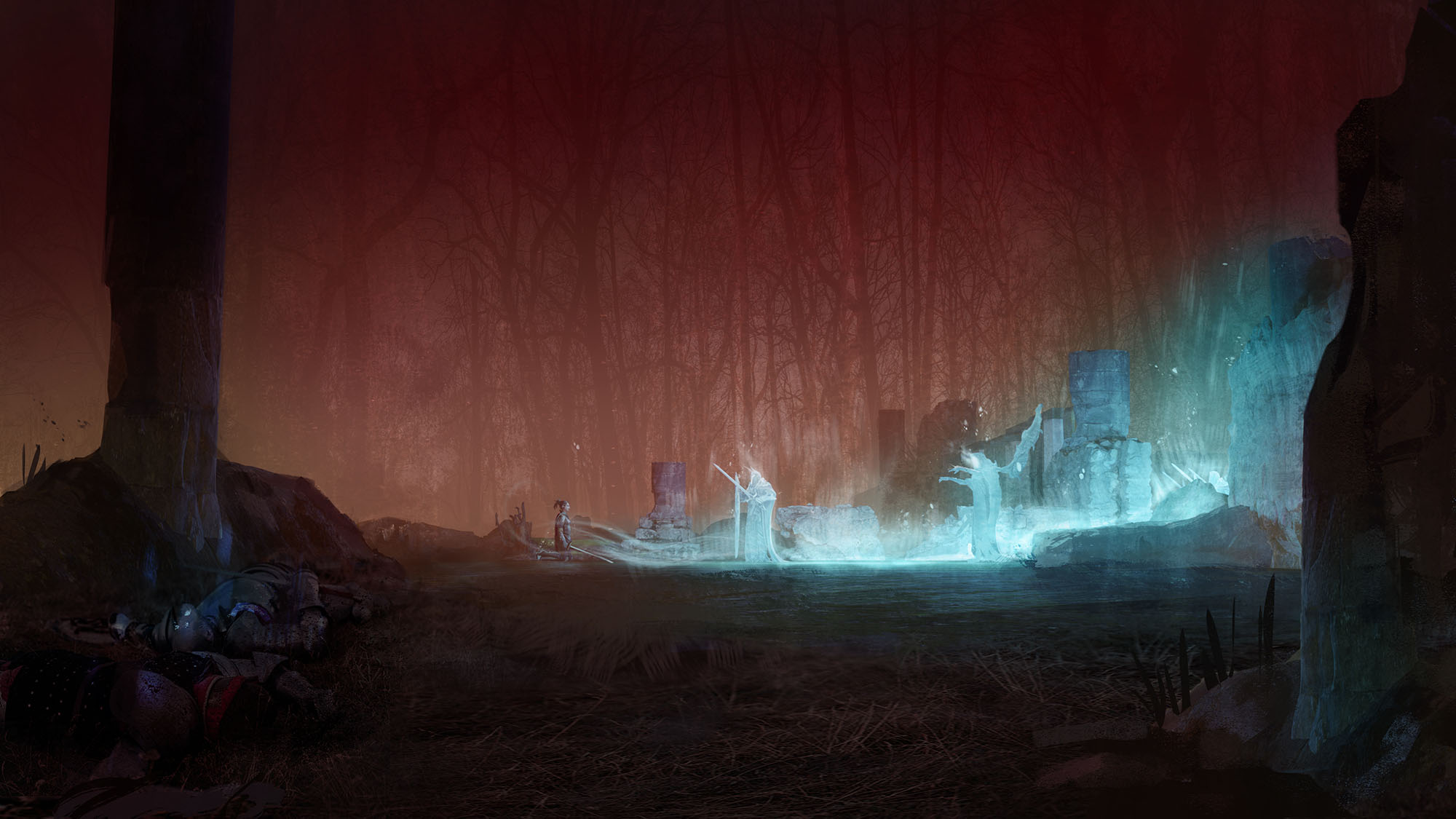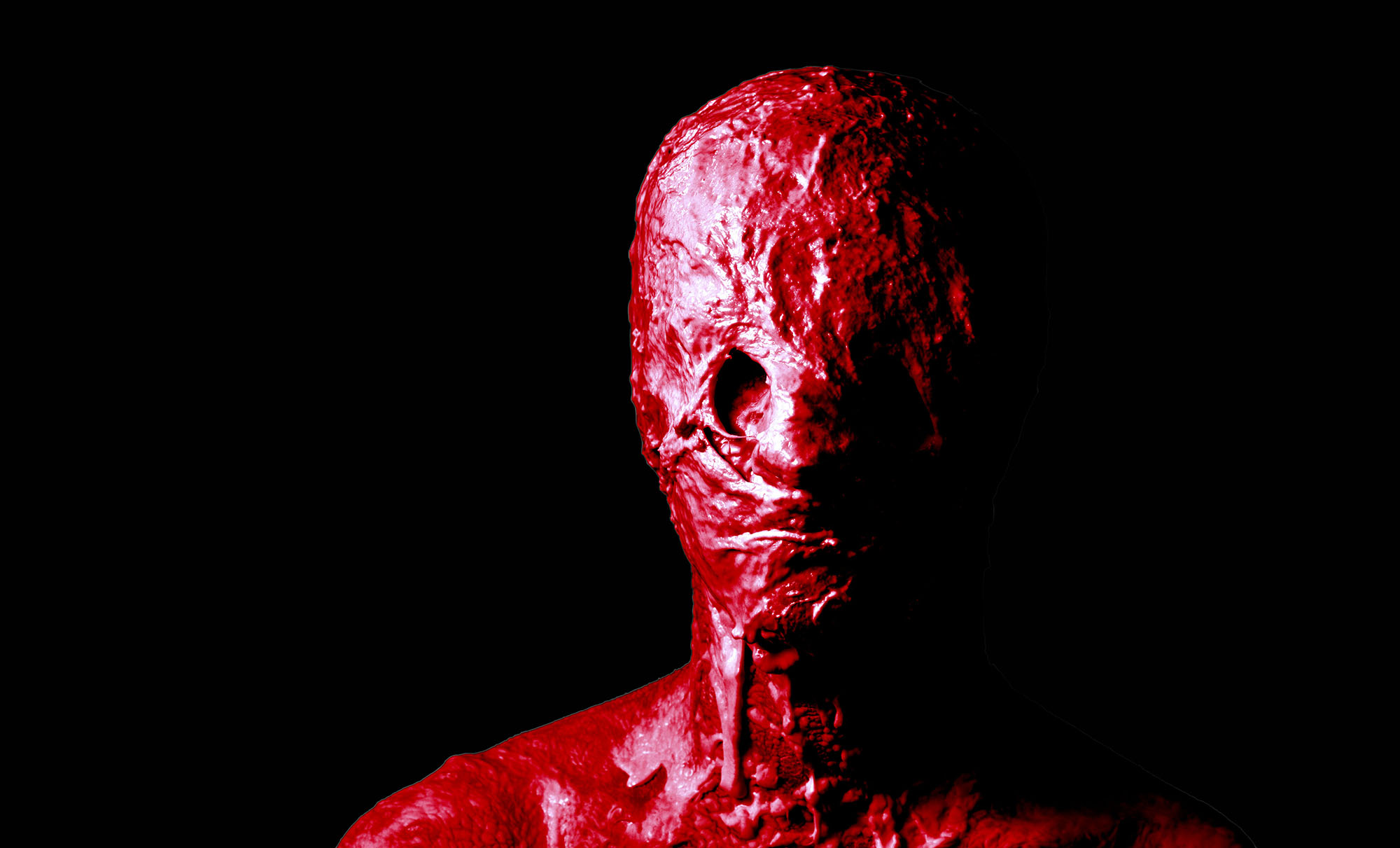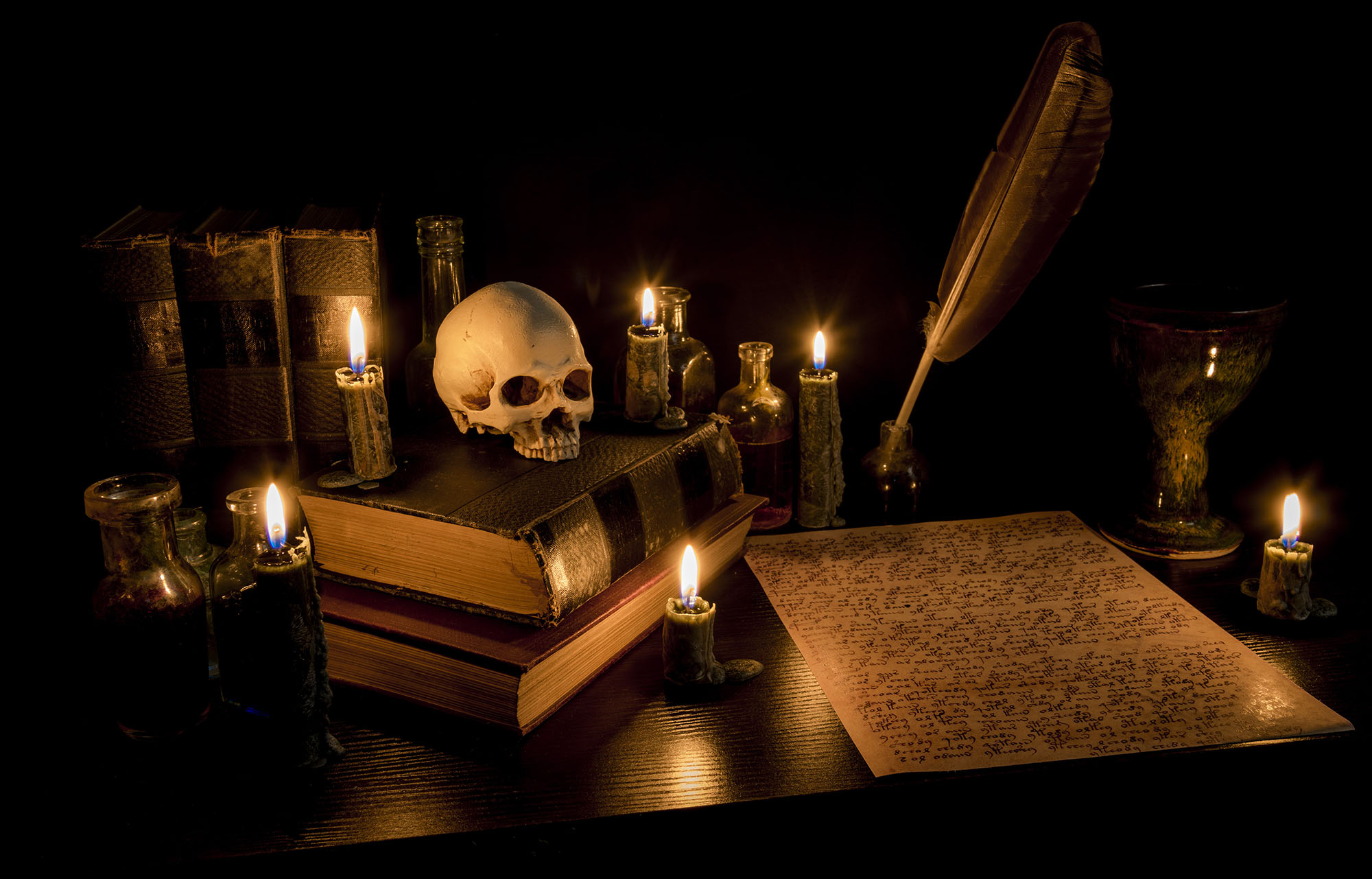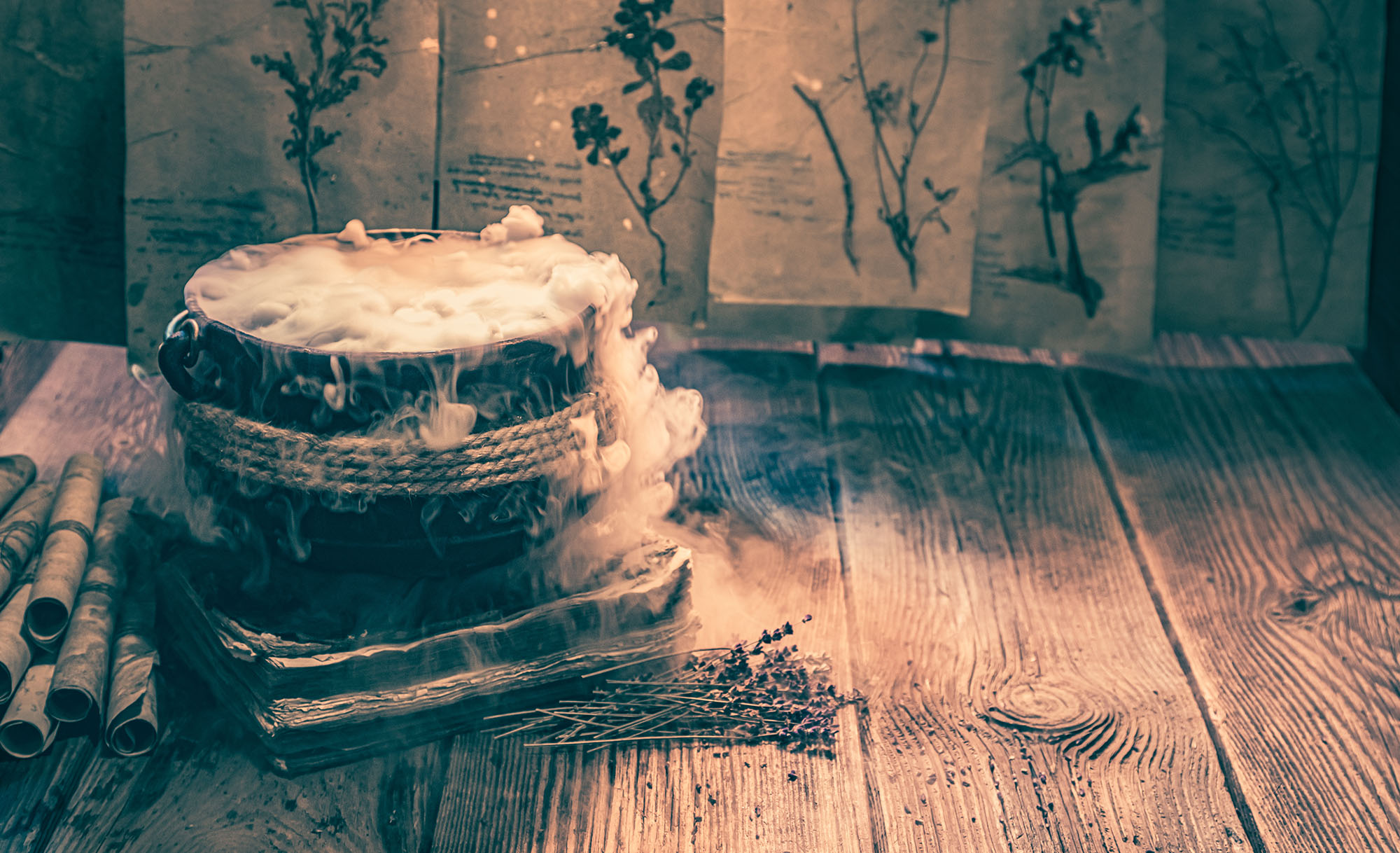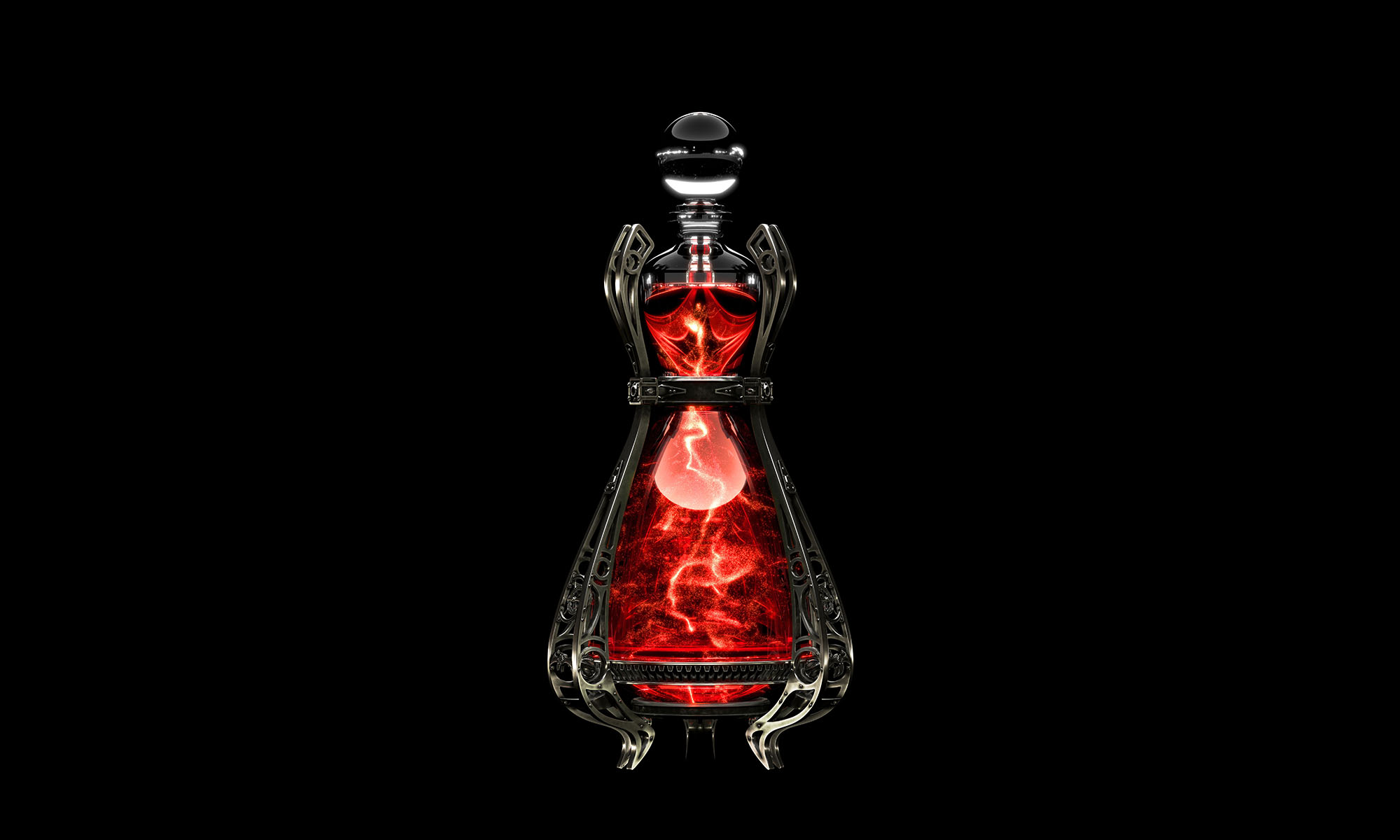These detailed notes, written in silver ink on black vellum scrolls, constitute the exploration of an alchemical process referred to as azh-thalar, a dark elven word which can be translated as “boneforging.” And, indeed, the text refers to the work as deriving from the “lore of the dark elves” and, elsewhere, “the teachings of Su-Thanaz.” Several excerpts of the original body of work are directly included, without translation, in the text itself.
Once translated in full, however, the text describes a process by which bone is taken from a dead or undead creature and then molded using alchemical processes into a new form. The items so created can be almost limitless in their variety, and part of the alchemical process specifically tempers the bone to be as hard as steel (allowing effective weapons, armor, and the like to be fashioned).
Particularly intriguing, however, are the advanced methods of undead boneforging, in which the powers of the undead creature can be infused into the bone itself after the shaping is completed.
BONEFORGING
Boneforging requires alchemist’s supplies and a successful Intelligence (alchemist’s supplies) check, the difficulty of which is dependent on the size of the item desired, as shown on the table below.
Size Alchemy DC Cost
Tiny or smaller 11 25 gp
Small or Medium 13 50 gp
Large 16 100 gp
Huge 19 200 gp
Gargantuan or larger 24 400 gp
Obviously, the alchemist must also have the requisite supply of bone. Complex or artistic items may require additional crafting checks at the DM’s discretion.
Boneforging is generally only appropriate for solid, static items (e.g., a chair, knife, bowl), but boneforged components could be combined with other material. Supple material (e.g., a rope) can be forged from cartilage, but this is a more delicate process and the Intelligence (alchemist’s supplies) check to make the item is made at disadvantage.
ADVANCED BONEFORGING
An alchemist creating a boneforged magic item from an undead creature can attempt to replace one spell required by the item creation with the raw necromantic power of the undead from which the item is being crafted. (Note that these items are not made from the remains of the dead; they are forged from undead still possessed of unlife.)
This process can generally be used to replace a spell with a level equal to 1/3rd of the undead creature’s challenge rating. (So a CR 9 undead could be used to replace a 3rd level spell.) A skeleton or zombie, however, can only be used to replace a spell with a level equal to 1/6th their HD. (The simplistic energy which animates such mindless undead is not particularly useful for the complex matricies of the advanced boneforging.)
Advanced boneforging requires an Intelligence (alchemist’s supplies) check (DC 15 + the spell level being replaced). If the check fails, the spell is not replaced and must be provided normally or the item creation process will fail.
Boneforging does not reduce the cost of creating the magic item. (The cost of the alchemical supplies normally required by boneforging is included in this cost, however.)

